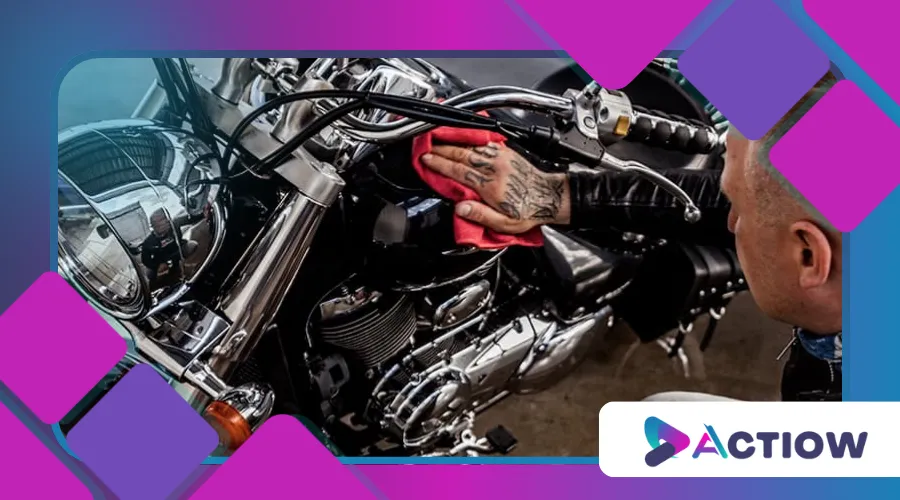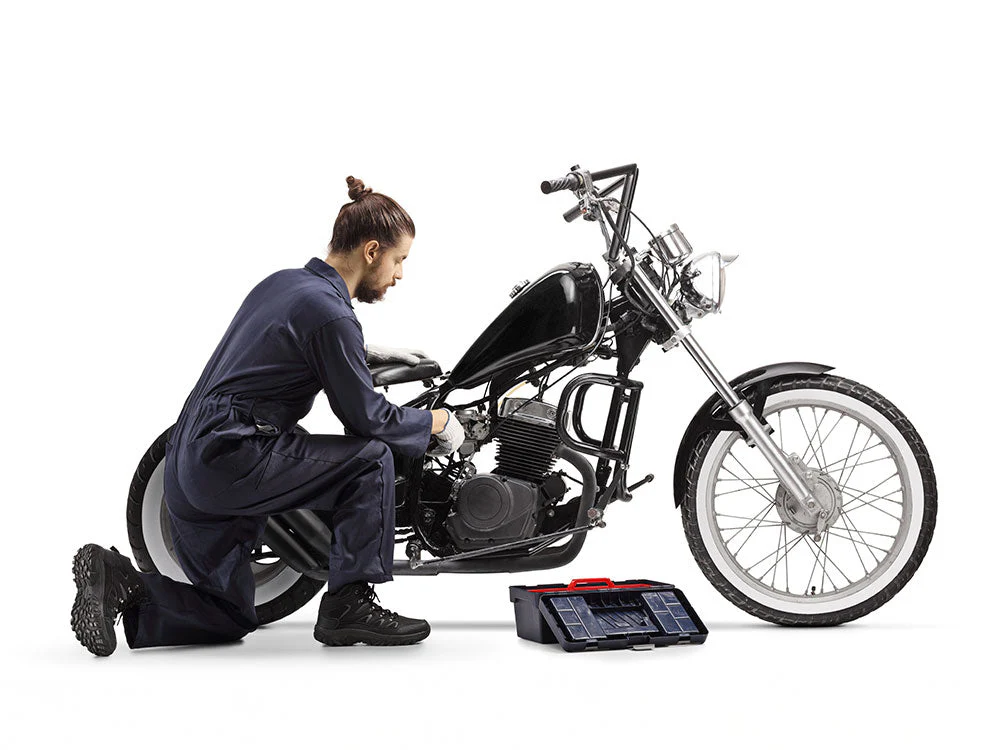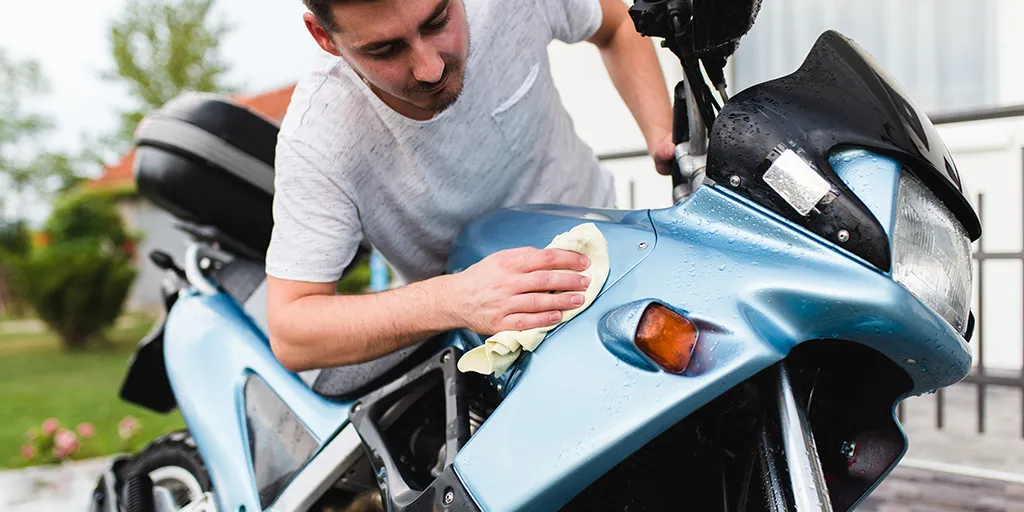How to Take Care of Your Motorcycle

Anúncios
Taking care of your motorcycle is not just about keeping it shiny; it’s about ensuring safety, performance, and longevity.
Whether you’re a seasoned rider or a beginner, understanding the nuances of motorcycle maintenance can save you from costly repairs and unexpected breakdowns.
In this guide, we’ll explore practical, up-to-date strategies to keep your bike in top shape, backed by expert insights and data.
Anúncios
Regular maintenance not only enhances your riding experience but also increases the resale value of your motorcycle.
Investing time in care and upkeep can lead to a more enjoyable and reliable ride for years to come.
Why Regular Maintenance Matters
Motorcycles are complex machines with hundreds of moving parts.
Neglecting even a single component can lead to a domino effect of issues.
According to a 2022 study by the Motorcycle Industry Council, proper maintenance can extend a motorcycle’s lifespan by up to 50%.
This statistic alone underscores the importance of taking care of your motorcycle seriously.
Moreover, regular maintenance can help you spot potential issues before they escalate into costly repairs.
Being proactive about your motorcycle’s health not only saves money but also enhances your overall safety on the road.
1. Keep It Clean: The First Line of Defense
Dirt and grime aren’t just unsightly; they can corrode metal parts and clog essential systems.
Regular washing is the simplest yet most effective way to take care of your motorcycle.
Use a mild detergent and avoid high-pressure washers, which can force water into sensitive areas like bearings and electrical connections.
Pro Tip: After washing, apply a high-quality wax to protect the paint and chrome from UV rays and environmental contaminants.
Additionally, consider using a motorcycle-specific cleaner that targets grease and grime without damaging the finish.
Cleaning your bike regularly also allows you to inspect it for any signs of wear or damage that might otherwise go unnoticed.
2. Oil Changes: The Lifeblood of Your Engine
Engine oil lubricates, cools, and cleans internal components.
Over time, oil breaks down and loses its effectiveness.
Most manufacturers recommend changing the oil every 3,000 to 5,000 miles, but consult your owner’s manual for specifics.
Table 1: Recommended Oil Change Intervals
| Motorcycle Type | Oil Change Interval |
|---|---|
| Sport Bikes | 3,000 miles |
| Cruisers | 4,000 miles |
| Touring Bikes | 5,000 miles |
Regular oil changes are crucial for maintaining engine health and performance.
Using high-quality oil can also help improve fuel efficiency and reduce engine wear.
+ The Best Motorcycles for Beginners
3. Tire Maintenance: Safety Starts Here
Tires are your only contact with the road, making their upkeep critical.
Check tire pressure weekly and inspect for cracks, punctures, or uneven wear.
Underinflated tires reduce fuel efficiency and handling, while overinflated tires increase the risk of blowouts.
Pro Tip: Use a tire pressure gauge for accuracy, and always adjust pressure when the tires are cold for the most reliable reading.
Additionally, rotating your tires regularly can help ensure even wear, extending their lifespan.
Investing in quality tires suited for your riding style can significantly enhance your overall riding experience.
4. Brake Systems: Stop with Confidence
Brakes are non-negotiable when it comes to safety.
Inspect brake pads for wear and replace them if they’re thinner than 1/8 inch.
Also, check brake fluid levels and top off if necessary.
Spongy brakes or unusual noises are red flags that demand immediate attention.
Regularly bleeding the brake lines can also help maintain optimal braking performance, especially if you notice a decrease in responsiveness.
Understanding your motorcycle’s braking system will empower you to make timely repairs and adjustments.

5. Chain Care: Smooth Transmissions
A well-maintained chain ensures smooth power transfer from the engine to the rear wheel.
Clean and lubricate the chain every 500 miles, and adjust its tension as needed.
A loose or dirty chain can cause poor performance and even damage the sprockets.
Table 2: Chain Maintenance Schedule
| Activity | Frequency |
|---|---|
| Cleaning | Every 500 miles |
| Lubrication | Every 500 miles |
| Tension Adjustment | Every 1,000 miles |
Proper chain maintenance not only enhances performance but also contributes to overall safety.
Investing in a quality chain cleaner and lubricant can make this task easier and more effective.
6. Battery Health: Power Up Your Ride
Motorcycle batteries are often overlooked until they fail.
Check the terminals for corrosion and ensure the battery is securely mounted.
If your bike has a conventional lead-acid battery, top off the electrolyte levels with distilled water.
For maintenance-free batteries, monitor the voltage regularly.
Pro Tip: Use a trickle charger during long periods of inactivity to prevent the battery from draining.
Understanding how to maintain your battery can prevent inconvenient breakdowns and extend its lifespan.
7. Fluid Levels: Beyond Just Oil
Your motorcycle relies on several fluids, including coolant, brake fluid, and transmission oil.
Check these levels monthly and top off or replace them as needed.
Contaminated or low fluids can lead to overheating, brake failure, or gearbox issues.
Regularly inspecting fluid levels is a simple yet effective way to ensure your motorcycle runs smoothly.
Additionally, understanding the specific fluids your motorcycle requires can help you make informed decisions when it comes time for replacements.
8. Suspension Systems: Ride Smoothly
A well-tuned suspension enhances comfort and handling.
Inspect the forks and shocks for leaks, and ensure they’re properly adjusted for your weight and riding style.
If you notice excessive bouncing or a rough ride, it might be time for a professional inspection.
Proper suspension settings can significantly improve your riding experience, especially on rough terrain.
Regularly adjusting your suspension can also help prevent premature wear on other components of your motorcycle.

9. Electrical Systems: Keep the Sparks Flying
Modern motorcycles are packed with electronics, from ignition systems to LED lights.
Regularly inspect wiring for fraying or loose connections, and replace blown fuses promptly.
A malfunctioning electrical system can leave you stranded or compromise safety features like ABS.
Understanding the basics of your motorcycle’s electrical system can empower you to troubleshoot minor issues.
Consider investing in a multimeter to help diagnose electrical problems effectively.
++ The Evolution of Car Safety Features
10. Storage Solutions: Protect Your Investment
If you live in a region with harsh winters or plan to store your bike for an extended period, proper storage is crucial.
Fill the fuel tank to prevent condensation, add a fuel stabilizer, and disconnect the battery.
Cover the motorcycle with a breathable, weather-resistant cover to protect it from dust and moisture.
Proper storage techniques can significantly extend the life of your motorcycle and its components.
Also, consider periodically checking on your bike during storage to ensure everything remains in good condition.
The Argument for DIY vs. Professional Maintenance
While many riders enjoy the hands-on approach of DIY maintenance, some tasks are best left to professionals.
For instance, valve adjustments and carburetor tuning require specialized tools and expertise.
However, learning basic skills like oil changes and chain maintenance can save you money and deepen your connection with your bike.
Additionally, many local motorcycle shops offer workshops where you can learn essential maintenance skills from experienced mechanics.
Building a rapport with a trusted mechanic can also be beneficial for more complex repairs and services.
The Environmental Impact of Motorcycle Care
Taking care of your motorcycle isn’t just about personal benefits; it’s also an eco-friendly practice.
Properly maintained bikes emit fewer pollutants and consume less fuel.
By recycling used oil and tires, you can further reduce your environmental footprint.
Additionally, many manufacturers are now focusing on sustainable practices, making it easier for riders to maintain an eco-friendly lifestyle.
Being mindful of your motorcycle’s environmental impact can enhance your sense of responsibility as a rider.
For more detailed resources on motorcycle maintenance, visit Motorcycle Safety Foundation.
Conclusion: A Commitment to Excellence
Taking care of your motorcycle is a commitment to safety, performance, and sustainability.
By following these tips, you’ll not only extend the life of your bike but also enjoy a smoother, safer ride.
Remember, a well-maintained motorcycle is a reflection of its owner’s dedication and passion for the open road.
Whether you’re cruising down the highway or navigating city streets, your motorcycle deserves the best care.
Start today, and ride with confidence knowing you’ve done everything to keep your machine in peak condition.
This guide combines practical advice, expert insights, and actionable tips to help you master the art of motorcycle maintenance.
By taking care of your motorcycle, you’re not just preserving a machine—you’re nurturing a lifestyle.
